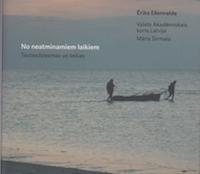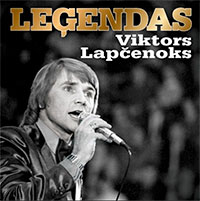Latvian composer Ēriks Ešenvalds continues to gain international renown and fame, particularly with his choir music, which is now regularly performed by choirs worldwide. Audiences globally have been moved by his works, with their memorable melodies, their spiritual depth, and emotional resonance.
Ešenvalds’ works have often been inspired by legends, as well as folk traditions, and, recognizing that, the State Choir Latvija, conducted by Māris Sirmais, decided to record an album’s worth of Ešenvalds’ choir works on these themes. Entitled No neatminamiem laikiem (or From the Dim and Distant Past), the CD was released in 2017. Subtitled ‘Tautasdziesmas un teikas’ (or ‘Folk Songs and Fables’), the collection gathers choir songs inspired by folklore and stories.
Though his main influence is Latvian folk songs and fables, Ešenvalds has found inspiration worldwide through his travels. Perhaps it was during his time as composer in residence at the University of Cambridge’s Trinity College that Ešenvalds further developed his interest in the folklore and songs of the British Isles, as this collection features arrangements of both the Scottish ‘My Love is Like a Red, Red Rose’ (words by Scottish poet Robert Burns) and the Irish ‘O Danny Boy’ (although the lyrics were originally by an English poet, it is one of the most famous of Irish songs). Both songs feature the duet of baritone Daumants Kalniņš and soprano Laura Štoma. Ešenvalds takes a traditional approach to these arrangements, leaving the soloists to sing the melody while the choir harmonizes, thereby leaving these memorable melodies in the foreground. The soloists deliver an enrapturing performance of these songs, particularly the heartbreaking ‘O Danny Boy’, with Kalniņš’ resonant, affecting vocals flowing together with Štoma’s soaring, angelic singing to create a deeply emotional rendering of the song.
Legends and stories of the Northern Lights have always been a major influence and inspiration for Ešenvalds’ works, and the album has a number of works on these themes. One example is the song simply entitled ‘Northern Lights’, which begins with a haunting Latvian folk song sung by Ansis Bētiņš. The folk song is about the coming of war foretold by the Northern Lights, and, as the CD booklet notes, in Latvian folklore the Northern Lights are considered to be spirits of soldiers. The song also uses texts by poets Charles Francis Hall and Fridtjof Nansen, also about the Northern Lights, and Ešenvalds meshes all of these evocative images and the wonder and amazement in the words into a memorable musical portrayal of these mystic images.
Ešenvalds has, of course, found much inspiration in Latvian folklore as well. Two such examples on this collection are ‘Ainava ar ganiem’ and ‘Aizej, lietiņ’. ‘Ainava’ combines elements of Latvian folk songs and folklore, presenting a engrossing musical picture of the Latvian landscape and herders working throughout the day. The song also incorporates elements of traditional Latvian singing, which, when combined with the choir’s harmonies, presents a pastoral panorama. ‘Aizej, lietiņ’’ is inspired by the more mystic aspects of Latvian folklore, and the song is one of conjuring and prayer by a herdsman for the rain to depart. The ensemble Altera veritas, with their unique combination of instruments (kokle, flute and accordion), provides an appropriately atmospheric foundation for this compelling performance, which also features soloist and folk singer Asnate Rancāne (of the ensemble Tautumeitas and other folk projects). The atmospheric middle section, with its soloists joining in sequence to create a rich, musical tapestry, then leads to a thundering, transformative conclusion, musically conjuring the celebration of the appearance of the sun.
The State Choir Latvija and conductor Māris Sirmais have long been collaborators and proponents of Ešenvalds’ music (the composer was a singer in the choir for many years). This is their second CD of Ešenvalds’ choir compositions (the first was 2013’s At the Foot of the Sky), and, as on that CD, the choir and Sirmais prove to be peerless interpreters of the composer’s works and again show that they are one of the most talented and versatile choirs performing today.
Folklore and folk songs have long been a source for inspiration for composer Ēriks Ešenvalds, and the fruits of this labor are on full display on No neatminamiem laikiem. The State Choir Latvija and artistic director Māris Sirmais take the listener on a magical and memorable journey throughout tales and songs of Latvia and other nations, throughout songs both sweeping and nuanced, broad in scope and intimate. The voices of the choir join together to lift these songs and bring them to life, majestically presenting these legends and stories. Ešenvalds’ choir music, in the hands of an exceptionally talented choir like Latvija, is a memorable musical accomplishment.
For further information, please visit Ēriks Ešenvalds’ website and the State Choir Latvija website.
No neatminamiem laikiem
State Choir Latvija
VAK Latvija, 2017
Track listing:
- My Love is Like a Red, Red Rose
- Ainava ar ganiem
- There Will Come Soft Rains
- Rivers of Light
- Northern Lights
- The First Tears
- O Danny Boy
- Aizej, lietiņ
- Ancient Prairie
- Rasa






